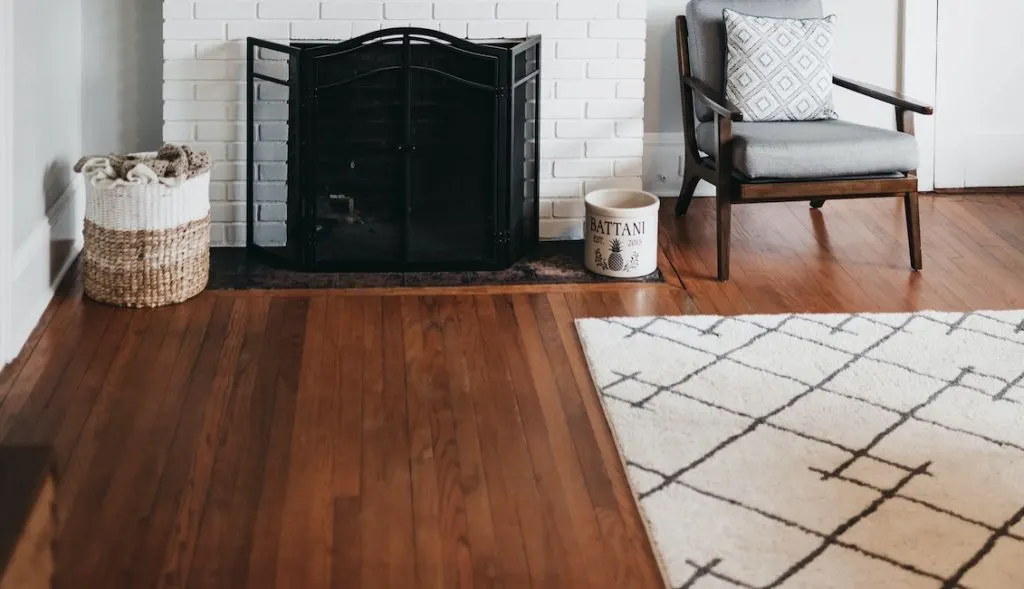If there is a floor above you, you may have heard some noise coming from your upstairs neighbors. It may sound as if they are fighting with furniture or stomping on the floor. These noises can be distracting and may cost you your peace. It is even worse when you hear them in the middle of the night when you are sleeping.
The good news is other than telling them to be quieter; you can take some steps to deal with the problem. First, you need to identify where the noise is coming from so you can reduce noise between floors. This guide will help you in doing that.
What is the type of noise?
Different types of noise may come from the upstairs floor. It is important to note what they are so you can remedy them correctly. Skipping this step may make you make decisions that are unnecessary hence wasting your time and noise. The following are the types of noises you may experience.
Contact noise
This is a noise that comes about when two or more things come into contact with one another. The sound vibrations transfer from the objects to the air hence leading to the noise. It can come from banging doors, dragging furniture, or even someone walking in heels, especially on wooden floors.
Flanking
It is similar to contact noise, but it differs since where you hear the noise is not necessarily where it is generated. Instead, the noise travels in vibrations through solid surfaces to other areas, which allows you to listen to the noise.
For example, if your neighbor’s air conditioner is loud, the noise travels through solid surfaces, and you cannot tell where exactly it comes from. Therefore, it is essential to check for this type of noise before moving into a house since you can hear it better when the house is empty.
Airborne
It is sound that doesn’t come from contact, but it travels through the air, causing a disturbance. For example, if your neighbor plays a loud subwoofer, it travels through the air, so you can hear it from downstairs. It can also come from a loud blender or television. It is the easiest type of noise to deal with.
Is it normal to hear your upstairs neighbor’s footsteps?
It is normal to have upstairs floors very noisy, especially wearing outside shoes such as boots and heels. This noise can be pretty loud and distracting, so it is hard to ignore it. However, the footsteps are more audible when it is on concrete or wooden floors.
Carpeting the floors can help create quiet upstairs neighbors footsteps by absorbing some of the vibrations. If you can hear your neighbors walking, you can suggest this to them.
How to reduce noise from upstairs neighbors
Once you have identified the type of noise you are experiencing, you can then develop the best remedy for it. Some of these methods are DIY, so they can be done quickly and cheaply.
Talk to your neighbors
Sometimes your neighbors may not be aware of how much noise they are generating in their home. This is why it is best to talk to them after locating the type of noise emanating from their house. For example, if they bang doors and cabinets, you can tell them to be gentler when closing them.
If the noise is airborne from loud music or television, make sure to ask them to reduce their volume, so they do not cause a disturbance downstairs. Make sure to be polite about your request so that it doesn’t appear to be an attack on your neighbors.
If they feel attacked, they may not feel obligated to take care of the source of the problem, and you may end up feeling frustrated.
Acoustic foam
This is a cheap and easy method of dealing with noise from your upstairs neighbor. Acoustic foam is readily available in stores or online, which you can buy and even install yourself if you don’t want to incur more costs.
One downside to using this solution is that it doesn’t look aesthetically pleasing, but it works well, which may cancel that problem. Also, you can hang them so they look like clouds, or nail them in the ceiling, which looks better.
Finally, for better soundproofing, you can apply a layer of green glue, thus increasing the effectiveness of the foam.
Drywall
If you have a drywall ceiling, increasing its density can do an excellent job of eliminating the sounds coming from upstairs. You can use panels made of various materials such as plywood or gypsum. Install a layer of drywall on the ceiling directly, or you can do it after applying a layer of green glue between them.
The substance is effective in controlling the vibrations coming from the floor above. This allows you to get rid of all types of noises.
You can also improve the effectiveness of soundproofing by adding a layer of mass-loaded vinyl, in total that creates three layers of material that should control any sounds coming from the floor above.
Sealant
If your ceiling has any spaces that are not covered by drywall, the noise could bounce from the holes, amplifying them. Using drywall to cover these problem areas may make the problem more significant, so the sealant is a better option.
You may need to talk to your landlord before applying it since it is permanent. The good thing about using the adhesive is you can do it yourself and get excellent results.
Ensure that there is no dirt on the area before applying it. Cover all the spaces between your wall and ceiling carefully, so there is no space for sound to pass through.
Drop ceiling
In case the problem is severe due to a thin floor between your houses, you may decide to install a drop ceiling. It is a permanent change to your home, so you will need permission from your landlord, and you may need to involve a qualified contractor.
A drop ceiling hangs under your ceiling such that there is space between the two layers. The area absorbs all the noise before they reach the bottom hence adequately soundproofing your home.
It effectively deals with all noises since it absorbs the sound vibrations before they get to your home.
White noise
When dealing with airborne noises from loud music or television, it can be helpful to play white noises in your home to counter the noise from upstairs. Most sounds have a single frequency, but white noises play at multiple frequencies simultaneously, hence, drowning down the other noises.
White noise can also block background noises from your own home, so it is effective for dealing with noises from neighbors on the same floor as you. In addition, it can get rid of flanking noises from fans and air conditioners.
You can play white noises through your music system or buy a white noise machine. This can be placed anywhere in your home to drown sounds coming from any direction.
Carpets and Mats
You can deal with contact noise by installing rubber base mats and carpets. If the noise is too loud for you, you can ask your neighbor to consider getting anti-vibration mats and rugs. This is also applicable when the noise comes from vibrations by appliances such as a fridge or washing machine.

If your neighbor is considerate enough, they can install these pads or mats all over their home. This is also a consideration to make if you live above another home since it will significantly reduce noise for downstairs neighbors.
In addition, the mats absorb most of the sounds and vibrations hence soundproofing your home.
Is insulating my apartment ceiling worth it?
Insulating your ceiling is a good way of dealing with all types of noise, so it is worth the cost and trouble. It works by increasing the mass and density of the ceiling using recycled fiber. The fiber absorbs all the sounds and vibrations in your home hence eliminating the problem of loud upstairs neighbors.
Unfortunately, this is not a solution for tiny noises that occur once in a while in your home. It is best to get a professional since although it will increase the cost, it saves you a lot of trouble getting materials and ensuring that it is done correctly.
This is because it involves professionals, and it may take a while to complete the installation. It can be done to your whole home or part of it in areas where the sound is highest. If you want to do it yourself, ensure that you understand what you’re doing and have the right tools for the job.
Check this too: Best Way to Place a Soundbar’s Subwoofer
If there is a lot of noise and vibrations coming from your upstairs neighbor, it can drive you crazy, especially when you want to relax or sleep. You can avoid this problem by checking your house well before moving in.
Ensure that the floors are thick enough to drown out all the sounds from your neighbors. Carpeted apartments are best in this case since they soundproof your home to a certain degree. If you notice the problem after moving in, this article’s tips will help you deal with the problem effectively.

